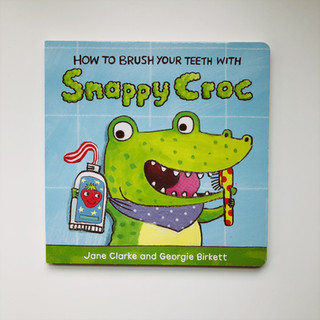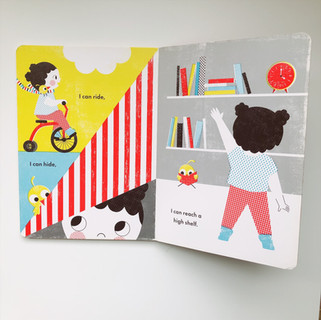Inside: Potty training tips to help your toddler with putting on pants and getting dressed themselves.
This content contains affiliate links.
One day when I went to pick up my son from his toddler Montessori program, I was surprised to discover that he could put on his snowpants all by himself (at the time he was 19-months-old with other toddlers under 2.5 years old).
And it wasn't just him.
All his little friends were able to do it, too. We live in the snows-till-April state of Maine, and I can't think of anything more helpful than finding out your toddler can do his snowpants all by himself through the endless weeks of frigid temperatures. I almost hugged his teacher, I was so excited to find out he happily had this skill down (his little cheeks flashed me a smile of absolute pride as he showed me.)
And I'll admit my surprise in learning that a skill like that was possible at his age.
He wasn't even two-years-old.
Curious, I asked his Montessori teacher HOW she taught a class of young toddlers how to do their snowpants
with the zippers
with the straps
How did she teach them to get their snowpants on and off all by themselves?

When it comes to how to potty train a younger toddler, one common issue comes up that I see again and again.
The parents are often doing TOO MUCH when it comes to the pants.
Because those pants (or leggings, or shorts), the pants that get added in Block Two of Oh Crap Potty Training can definitely be a sticky point.
The pants can be what gets in the way of a wondrous pee catch. Yet those are the very same pants that toddlers need to learn how to *push* down all by themselves.
So let's chat about the pesky pants and the instinctual desire we have as parents to jump in and just *do it* for our toddlers (after all, just a short time ago, you were doing it all for your little one)..
But first, let's talk pants.
1. Keep the clothing simple.
You want to be sure when you step into potty training, that your child has easy pants or shorts to push down and that your toddler is okay with putting on the pants (some styles can be harder than others). Now is the time to set aside the overalls (as adorable as they may be), the zippered and button pants, the tights that cling to your girl's waist... you want easy-peezy waistband pants for a toddler to push down.
Set your child up for success with easy clothing to work with as a starting point.
And take it in stages. After you're through Block Two of Oh Crap Potty Training, it's best to see what underwear at home looks like before adding in another barrier (pants over underwear.) See if you can get a pee catch with easy-to-push-down potty training underwear without the pants. Stack up success!

2. Be specific with language.
If you take away anything from this post, I can cut it down to one word. There's one word you should change in talking about pants with your toddler when you start potty training.
This one word can help your toddler understand what you want him to do.
As Jamie Glowacki notes in her book Oh Crap Potty Training, some of the things we say do not make sense to a toddler's brain.
Toddlers are very literal.
It may be a common part of speech to say *pull your pants down*, but it really doesn't make sense.
You're really pushing your pants down.
Change that one word and you can help your toddler understand what you mean.
Then, think about what else you do when you're pushing your pants down...step back and give your toddler some direction about hooking thumbs in the pants. Remember that this is a new skill just like anything else. Simple directions help.
Watch your toddler push pants down.
Watch your toddler put on pants.
Related: Wondering when and how your toddler will be able to wipe after a poop? First things first. You also want to be mindful of language in talking about poop and wiping. If you simply remind your child to wipe their butt, your toddler could literally wipe their butt cheeks (and would be right!).
Be specific with language and practice where the wiping should happen to get a clean bum.
You could say anus, butthole, whatever word your family is comfortable with. That's why I love The Gas We Pass (which shares a great illustration on the human body, including pointing out the anus) and Everyone Poops which share how poop is this normal thing we all do.
Here's a simple but important thing you can miss when it comes to expectations.
3. Don't assume your toddler needs you to do it. They just may need practice.
Many parents assume their toddlers cannot put on pants or get pants down in potty training. And I often hear parents I'm consulting share they're pushing down their toddler's pants whenever they go to the potty.
Here's what my toddler's Montessori teacher shared with me that day about the snowpants.
We had just moved to Maine that year, and let me tell you, I was THRILLED that this skill was now learned and he could do his snowpants all by himself. What a gift during the long freezing winter!
Her answer reminded me what's at the core of the Montessori philosophy on the young child. And what's at the core of learning to potty train that Jamie sets up.

Her reply was..they simply practiced.
About a half hour a day, without any rush to get outside..she simply built in that practice time for the kids to work on putting on their snowpants every morning. Over time, they could take on more until they could do it themselves.
Simple, right?
Step back, observe, do less, and let it be a process.

The first part of the equation is believing your child is capable of doing their pants all by themselves: putting on the pants and getting the pants down.
And for most toddlers, that really is possible.
They just need more practice.
How can they practice if mom is always doing all the parts?
There's an inherent desire to move things along faster, especially as you enter back into your routine from potty training.
Getting out the door in the morning.
Getting here or there.
Toddlers are notoriously slow at the *doing* when it comes to those independent tasks..putting on shoes, putting on jackets, getting dressed.
But you can't expect your child to learn the skill of putting on pants and getting pants down if you're jumping in to do it FOR THEM all the time. That goes back to the pants party plan. Carving out time in the day, at a time when your toddler is not about to burst with pee, where you can calmly practice with your child.
Practice getting pants down: it's a pushing action.
Practice putting pants on: it's a pulling action.
Notice what it looks like when no one is in a rush.
Observe what's getting in the way.
See which pants are tripping up your toddler.
Share some specific directions on how to get those pants down.
Recently, I stumbled upon this stopwatch set for kids. The set includes a stopwatch, balloons, and practice sheets to note how fast you can do a challenge (like putting on pairs of underwear!).
Make something a game, make something a challenge, and watch your child rise to it.
With a simple stopwatch, you can time your child and make the pants practice a fun challenge (can you beat your score!). Pushing buttons? A gadget? To be in charge of a gadget is a novelty for this age.
Looking Ahead: Later in elementary school, the same stopwatch can help your child track their reading time, all by themselves, for reading logs.
Have you seen the Montessori coat flip that toddlers use in Montessori classrooms (and likely in many other preschool settings)? The trick is: the child puts their coat down on the floor upside down and then flips their coat over their head after putting their arms in the coat's armholes.
It's kind of like magic.
And it has a magical effect on every toddler the first time they show mom/dad that they can do their coat themselves.
The look of pride when they master that simple trick is priceless.
And that's big at this age. They really WANT to be doing things more independently. That's why we hear so many NOs from our toddlers. So what happens when we as parents step in to DO MORE (without an ask, just rush in and strip down the pants)?
Often then we see..
Resistance.
And when you think about it, it's not too surprising why rushing in and pushing pants down for your toddler can bring up resistance. For some toddlers, it can feel like an invasion of space. Like you're coming in and trying to force a pee.
Remember your toddler holds all the power with the pee.
In general, it's best to think on how a preschool teacher would handle your toddler's pants with potty training. And a preschool teacher likely wouldn't push down your child's pants without asking if they need help FIRST.
So if you're in that zone where your toddler still needs a lot of practice, what do you do in the meantime?
Try an ask...
You push down pants or mama does pants?

And here's a pattern I've noticed as a potty training consultant.
I often hear a lack of self-initiation with these same toddlers, where the parents are doing all the work of the pants for them.
It makes sense that if you act like your child can't do the steps themselves, they likely won't step up and start doing it.
Another great reason to start practicing with the pants, to step back and do less, is because you want to activate that self-initiation once your child is rolling with peeing in the potty.
And that may not happen if you're doing too much.
Related: If you're struggling with potty training, I've put together all the solutions in one place to make it easy for parents. It's an e-course called Potty Training Solutions and it's like an Oh Crap, Part 2. For when you know the how-to for potty training, but are feeling stuck or seeing toddler resistance that first week.
What else can we do to help push along the independent streak in toddlers?
Talk about routines.
That makes things more normalized and starts to get toddlers thinking of taking on things as their jobs.
Here are a few favorite children's books that tap into that toddler independence.
Now if I can get my kid to make his bed, my job will be done.
Illustrations: Citrus and Mint Designs
























